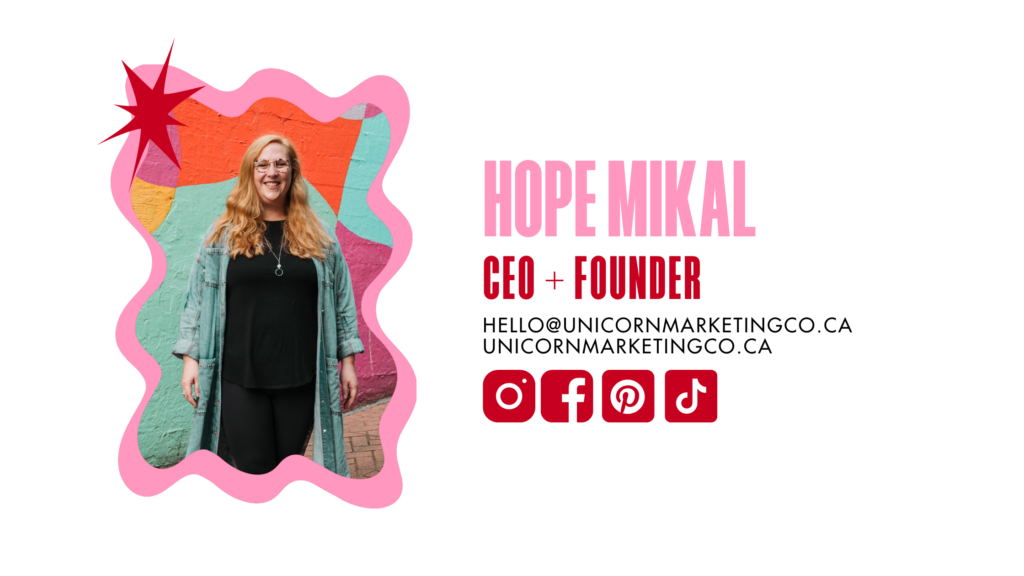Hey business bestie! If you’ve clicked on this blog topic, you’re here because you’re ready to elevate your e-commerce website experience. Here are nine unique ways to hone in on reducing your shopping cart abandonment. Let’s talk about your brand’s story and products, your why, and to get the job done with a SALE!
What is cart abandonment?
Let’s start first with a quick vocab term. Shopping cart abandonment is an e-commerce term that describes when shoppers add products to their online cart or begin the checkout process, but then leave the site before completing their purchase. Of course, this is gut wrenching for a creative business, as you’ve had a customer make their way to the cart through your funnels and landing pages, only to lose out on the sale.
Why is this $%#@ happening to me?
Okay, before we go into full-on panic mode, let’s take a deep breath. There could be quite a few reasons why a visitor may choose not to make a purchase and abandon their carts. Here are some options:
- The shipping cost is too high
- They had to create an account to checkout
- The checkout process is too long or complex
- They don’t trust the website
- There’s a lack of payment options
- The website is way too slow
To find out which one of these may be the problem for you, ask for help! At Unicorn Marketing Co., we offer website audits where we deep dive into all things on your website and come up with effective solutions.
9 Unique Ways To Reduce Shopping Cart Abandonment
We’ve done some research on some of our favourite e-commerce shopping experiences, and yes, we’ve got some answers. Let’s go through some tactics that you can start implementing into your e-commerce website today and reduce shopping cart abandonment.
Offer Free Shipping and Returns
We know that postal institutions and private companies have high shipping rates, and they just keep getting higher. Unfortunately for small businesses (and not-so-unfortunate for a potential consumer) e-commerce sites like Lululemon, Old Navy and Wayfair offer free shipping AND a hassle free return experience. This offering lowers the barriers of questions such as ‘What if I don’t like this item after all?’ Try offering free shipping after a certain price point, or if a consumer puts your highest priced item into their cart. This could look like, “Free shipping for all orders over $50.00 CAD+”
Enable Guest Checkout
Personally, I get super stressed when I have to remember all of these usernames and passwords for so many different sites. If there is an option where I can skip creating a new account on a website – yes, even if I am obsessed with the brand – chances are, I’m going to make a guest account. Enable a guest checkout process in your account settings! It will reduce any hesitation for a user and speed up the checkout process for a busy person.
Be Radically Transparent
One of my favourite case studies to reference is Everlane. This sustainably built clothing company works HARD to show their mindset and process through every single step of their business. They want to show up to the difficult questions in their industry by educating and challenging their community. Everlane uses the term ‘radically transparent’ to show the people who make their products, the factories where their products are made, and even go as a far as to show the profit margins other industry leaders are using high markers. Long story short here, is try being radically transparent with costs. If you are unable to shave off shipping costs – which is totally fair – be open about your business processes. Show the numbers, back up your facts.
Rethink the Checkout Process
An important question to ask yourself, “Is this checkout process too long or complex for a user?” Try putting yourself in the shoes of a person who doesn’t shop online very often, or who may be trying to shop on their mobile phones or tablets. What does this experience look like for someone who is not technology friendly? Are you asking too many additional questions during the checkout process? How many pages does a user go through to fulfill a purchase? Put a note in your calendar every 2-3 months to check back on the data and evaluate where changes can be made.
Add Social Proof
Highlight how much other customers love your products! Share testimonials, reviews, and customer’s past photos to create a sense of inspiration and community. Another one of my favourite clothing brands, Jackson Rowe, has reviews of every product on the product listing. ModCloth shows photos of past customers in their pieces. All of these are great examples of nurturing a potential relationship with your future customers.
Include Security Badges
Make sure your website’s SSL certificate is up to date. If you are a Shopify user, you can download a plugin to enable a security badge. Wanting to avoid another plugin? Don’t worry, you can input this code into your liquid file:
<style>
#shopify-security-badge {
position: absolute;
top: 0;
right: 0;
}
</style>
<div id="shopify-security-badge">Your secure badge goes here</div>Offer Multiple Payment Options
Honestly, sometimes I’m too lazy to get up off the couch and grab my wallet to input my credit card information. There, I said it. I don’t save my credit card information on my phone through iCloud keychain, so when I’m online shopping and there’s multiple payment types? Even better! Beyond credit card payments, try adding PayPal, Apple Pay, or ShopPay apps into your checkout process.
Don’t overlook the fact that payment plan options, such as Sezzle, AfterPay, and Klarna, make payments even more accessible.
Use Exit-Intent Pop Ups
Add in a pop-up to learn more about the needs of a customer as they navigate through your website. As an example, let’s say I’m looking for a new lightweight backpack for travelling. After I read through a product listing, I realize there’s not enough storage space in this option. What’s next? Offering related products in a feed can help me make a realistic buying decision. Including an exit-intent pop-up asking the direction question, “Hey, what are you looking for?” with a list of options will push me to keep shopping through the website. Another option is to add in a specific offer like, “Buy a pack and get a free travel kit!” Know what your audience is looking for and how to leverage this information!
Set Up Abandonment Cart Email Flows
This last one, MMMM, it’s my favourite. We love setting up abandoned cart email flows in Klaviyo (also our favourite e-mail marketing platform by the way) for our clients. Abandoned cart emails are automated messages sent to customers who exit a website without making a purchase or “reshelving” their items. Abandoned cart emails work to draw customers back to the site, encouraging them to complete the purchase they were already on the brink of making. After looking at sales for 6 months, or 500 purchases, we can use predictive analytics, A/B testing in subject lines, and much more to persuade a user to make a sale.
Let’s Use Data For Good
One of our favourite things at Unicorn is data. Instead of looking at a decrease or increase in sales, let’s reframe this way of thinking into looking at this data to improve your creative business. If you’re feeling overwhelmed and not sure where to start, chat with a team member in a 1:1 call. It’s free! Tap here to book a call.
Thanks for reading!
We absolutely love all things website design here at Unicorn Marketing Co.
Check out our other resourceful blog posts to learn more about website design and development, such as why a mobile view is so important or what your website needs to include.
Connect with us on Instagram and check out our other blog posts!


